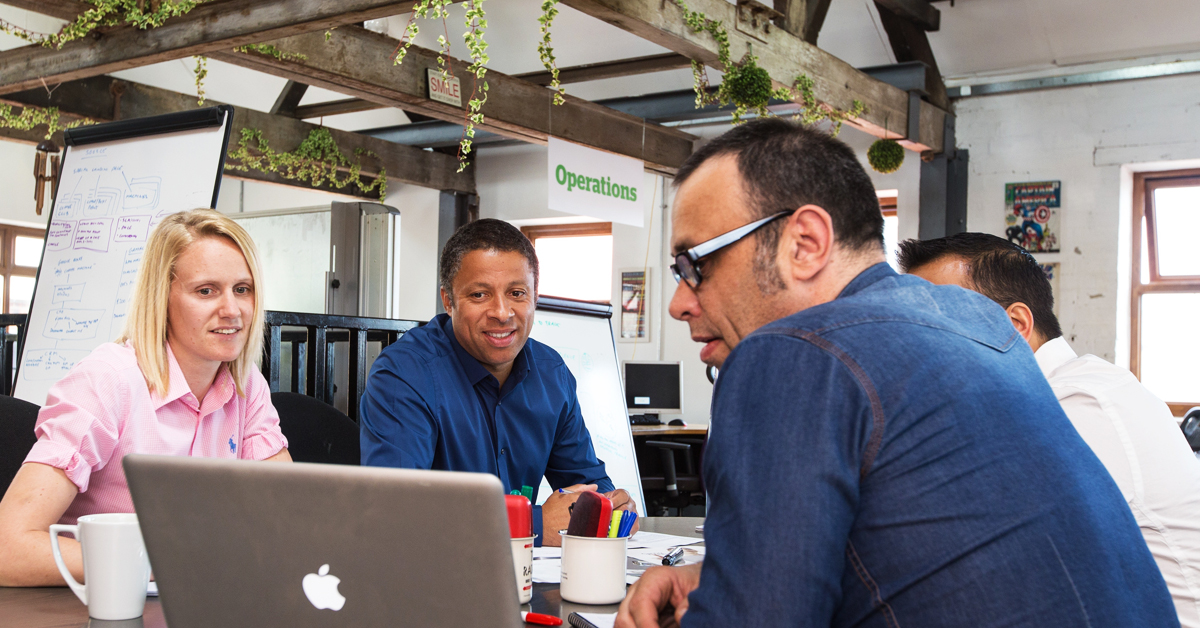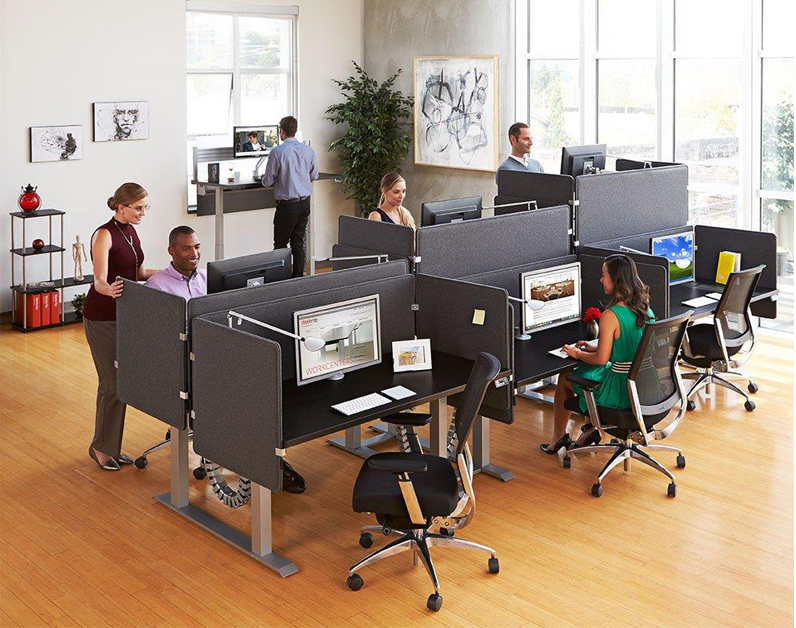Sodexo, a huge (10K clients in 80 countries) international services business, recently released a study of Global Workplace Trends. It is a compendium of the work of 50 contributors with a variety of expertise. Reading the whole thing is a bit intimidating (90 pages!), so for those who would prefer the Reader’s Digest version – keep reading..

The Agile Organization
This section talks about the rise of cellular organization to revive the entrepreneurial spirit. Autonomous cells inside organizations operating in a spirit of collaboration and friendly competition, but joining forces when necessary. A parallel study by Accenture of 277 companies studied , the ones with higher and well organized levels of cellular organization were 436 percent likelier to be seen as outstanding financial performers in their industry than those that lacked both. Teamwork in the cells is essential.

The rise of Cross-Workplaces

It can be beneficial to design physical spaces that funnel people into the same area, forcing constant, unplanned interactions. People need to be mixed together to stop them becoming inward looking and defensive. This is part of the appeal of incubator hubs and meetups, where different startups bounce ideas off one another in hot locations such as the “Silicon Roundabout” area of London, “Station F6” in Paris, Berlin’s “Factory”, Philadelphia’s “Pennovation Works” and many more. Collaboration and co-creation are increasingly central to creating customer value.

Intergenerational Learning
Worldwide, people are enjoying longer, healthier lives than past generations. As we stay healthier longer, we stay working longer, too. Today’s workforce spans five generations. Intergenerational learning throughout the course of one’s life puts the onus on workers of all ages to draw from and contribute to one another. The goal is to connect generations and help them work better together—exchanging knowledge, ideas, skills and more to enhance the broad skill sets everyone needs in today’s jobs.

Personal branding goes to work
Personal and corporate brands, once entirely separate entities, are now overlapping, as organizations realize the value of the influencers in their workforce. More companies are taking steps to merge and manage employees’ personal brands through the corporate lens. Brand messages are re-shared 24 times more frequently when posted by an employee versus the brand’s social media channels.

Redefining workplace experience
The human-centric workplace; Rather than expecting employees to adapt to workplaces, the discipline of experience design/design thinking aims to create workplaces adapted to the way employees work and do their jobs. By improving quality of life, workplace experience design also plays a significant role in the competition to attract and retain the best and the brightest talent. People spend 93 percent of their time indoors and 70 percent of their waking hours seated. Experience design should bring natural elements inside and promote health and well-being—not just the expected tactic of using plants, but also looking at how the environment encourages people to move through the space. Early offices were designed to extract relentless productivity from workers. Offices of today are the logical endpoint of a decades-long backlash against this way of thinking. Workplace experience design involves examining all of the different touch points in the workday and considering how these either enhance—or detract from— employee quality of life. Read this article from Business Insider.

Unlocking the potential of millennial talent
A 2016 survey of 7,700 millennials from 29 countries found that one in four would quit his or her current job to do something different within the next year, 1 and more than 20 percent of American millennials really did change jobs within the past year. This is more than three times the number of non-millennials. Gen Xers had the same turnover rates as millennials do today. Millennials now represent the largest share of the labor market—32 percent—a percentage that will only grow over the next decade. By 2025 they will comprise 75 percent of the global workforce. College enrollment rates for millennials are higher than for boomers or Gen Xers. Fortune 500 companies don’t offer the freedom, flexibility or mobility that millennials attribute to startup culture is precisely why millennials aren’t as interested in going to work for them anymore. To create a more flexible work environment, employers should look for ways to give millennial employees opportunities to travel offer flexible work hours or the ability to work from home periodically. Organizations that find ways to open the lines of communication and encourage authenticity among colleagues will enjoy greater collaboration and a more positive working environment.

Wellness
Employees increasingly look to their employers to foster a culture of health, optimize the built environment and provide wellness-enhancing amenities, programs and policies. The Journal of Occupational and Environmental Medicine has shown that companies that focus on the well-being and safety of workers have, in multiple studies, consistently outperformed the stock market. The WELL Building Standard™ (WELL) is an evidence-based system for measuring, certifying and monitoring the performance of building features that impact health and well-being. WELL™ sets performance requirements in seven concepts: air, water, nourishment, light, fitness, comfort and mind. Employers spend 90 percent of their operating costs on people—this means that even a small impact on productivity, engagement and satisfaction in the workplace can have huge returns on investment. Even small organizations are able to provide unique, customizable options that work well for employees.
